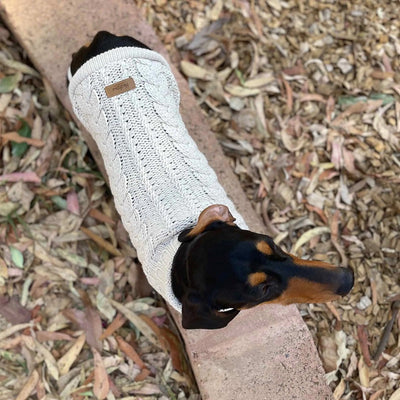
Nothing beats fresh eggs and they don't get any fresher than those your very own hens could be laying in your backyard! If you're planning to add some chickens to your backyard, it's important to create a safe and comfortable home for them.
A well-designed chicken coop can provide shelter, protection from predators, and a place for your hens to lay their eggs.
Here are some tips for setting up a chicken coop that will keep your new feathered friends happy and healthy.
Choose the Right Location for your Hen House.
When setting up a chicken coop, it's important to choose the right location. Look for a spot that is well-drained and provides plenty of shade and protection from the wind. The coop should also be located away from any potential predators, such as dogs or cats.
Ensure that there is protection from the wind. In the Southern Highlands, winds can gust up to 100km per hour during winter. If you live in a wind prone area, we recommend securing the enclosure with 'tie down stakes'.
Additionally, make sure the coop is easily accessible for cleaning and egg collection.
Buy the Best Chicken Coop you can afford with these Features:
When it comes to buying a chicken coop, it's important to invest in the best one you can afford. A good quality coop will not only keep your hens safe and comfortable, but it will also last longer and require less maintenance in the long run. Look for a coop that features:
- a nesting box for your hens to lay eggs in
- a covered in mesh area
- an opening that is easy to access for cleaning
- plenty of space to include water bottles or drinking stations
- weather proof fixings
Gather your Poultry Supplies
Before you bring home your new hens, make sure that you have everything setup and ready for your backyard flock.
- Hen house
- Drinkers and feeders
- Food
- Bedding
- Mite and parasite treatments- these should be applied every 6 weeks
- Foraging basket - hangs in their enclosure with vegtables & leafy greens inside.
- Treats
Provide Adequate Space for your Hen's to Free-Range!

One of the most important factors to consider when setting up a chicken coop is providing adequate space for your hens. Chickens need enough room to move around, stretch their wings, and lay eggs comfortably. As a general rule, you should provide at least 2-3 square feet of space per chicken inside the coop, and at least 8-10 square feet of outdoor space per chicken in a run or fenced area. Keep in mind that overcrowding can lead to stress, disease, and aggressive behaviour among your hens.
Hens will go home to roost at night, if you leave the door of their hen house open, they will eventually find their way home after free-ranging in your backyard. Once they are all home to roost, lock them in securely for the night.
What are the Benefits of Free-Ranging Hens?
Free ranging hens have several benefits, including:
-
Healthier eggs: Hens that are free to roam and forage for their own food produce eggs that are higher in nutrients such as omega-3 fatty acids, vitamin E, and beta-carotene.
-
Reduced stress: Free ranging hens have more space to move around and exhibit natural behaviours such as dust bathing, scratching, and pecking. This helps to reduce their stress levels and promote overall wellbeing.
-
Natural pest control: Hens are natural predators of insects, and when they are allowed to free range, they can help to control pest populations in the surrounding area.
-
Improved soil quality: Hens that are allowed to range freely can help to improve soil quality by scratching and turning the soil, which helps to incorporate organic matter and nutrients into the soil.
-
Environmental benefits: By allowing hens to free range, farmers can reduce the environmental impact of their operations by reducing the amount of waste and chemicals that are produced.
-
Animal welfare: Free ranging hens have more freedom and are able to exhibit natural behaviours, which can improve their overall welfare and reduce the risk of diseases associated with confined spaces.
Install Nesting Boxes and Perches.
In addition to providing enough space, it’s important to set up nesting boxes and perches inside the coop. Nesting boxes should be placed in a quiet, dark area of the coop and filled with clean bedding material like straw or wood shavings.
Each box should be large enough for one hen to comfortably lay eggs. Perches should be installed at varying heights to allow your hens to roost and sleep comfortably. Make sure to clean and sanitise both the nesting boxes and perches regularly to prevent the spread of disease.
Keep the Coop Clean and Secure.
Keeping your chicken coop clean and secure is essential for the health and safety of your hens. Regularly cleaning out the coop and replacing bedding material will help prevent the buildup of bacteria and parasites.
Unfortunately Australia has introduced pests such as foxes and feral cats who will prey on your hens unless they are secured. It’s also important to secure the coop with sturdy fencing and locks to prevent predators from getting in. Regularly inspect the coop for any signs of damage or wear and tear, and make repairs as needed to keep your hens safe and happy.
When Can I Expect Eggs from my Hens?
Hens typically start laying eggs between 16 and 24 weeks of age, although this can vary depending on the breed and individual hen. Some breeds may start laying as early as 16 weeks, while others may take up to 28 weeks or longer to start laying.
Additionally, factors such as diet, daylight hours, and environmental conditions can also affect the age at which hens start laying. Once hens start laying, they will typically lay eggs consistently for about two years, after which their egg production may decline.
What Breeds are the Best Egg Layers?
We sell the most popular breeds of chicks and hens that make the best egg layers:
- White leghorn
- Isa Browns
- Black Australorp and white leghorn
- Rhode Island and white leghorn
Contact our knowledgeable staff to find out when the next hatching dates are, or to place an order for pullets (adult hens).
© weknowpets 2023









